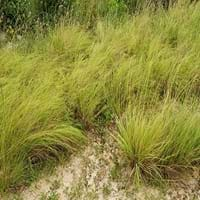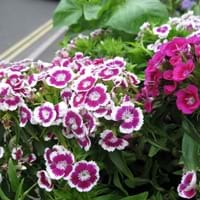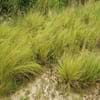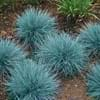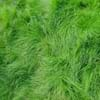Life Span
Perennial
Biennial and Perennial
Type
Grass
Flowering Plants
Origin
Eastern Africa, Southern Africa
Europe, Northern Europe, Western Europe
Types
Robusta blue, Robusta green, Curvula
'Bellagio Apricot' begonia, 'Bellagio Blush' begonia, 'Bellagio Pink' begonia
Habitat
Cultivated Beds
Subtropical climates, Tropical regions
USDA Hardiness Zone
7-13
3-9
AHS Heat Zone
12 - 10
9 - 1
Sunset Zone
4, 5, 6, 7, 8, 9, 10, 11, 12, 13, 14, 15, 16, 17, 18, 19, 20, 21, 22, 23, 24
21,22
Habit
Clump-Forming
Cushion/Mound-forming
Flower Color
Gray, Lavender
White, Yellow, Red, Pink, Light Pink, Rose, Dark Red, Orange Red
Flower Color Modifier
Bicolor
Bicolor
Fruit Color
Gray Green, Silver
Not Available
Leaf Color in Spring
Green, Dark Green
Light Green, Blue Green, Gray Green
Leaf Color in Summer
Light Green
Light Green, Blue Green, Gray Green
Leaf Color in Fall
Dark Green, Bronze
Light Green, Blue Green, Gray Green
Leaf Color in Winter
Yellow, Dark Green, Bronze
Light Green
Leaf Shape
Grass like
Long Linear
Plant Season
Summer, Fall, Winter
Spring, Summer, Fall
Sunlight
Full Sun
Full Sun, Partial Sun
Type of Soil
Loam, Sand
Loam
The pH of Soil
Acidic, Neutral, Alkaline
Neutral
Soil Drainage
Well drained
Well drained
Bloom Time
Late Summer, Early Fall
Early Spring, Spring, Late Spring
Tolerances
Drought
Drought, Shade areas
Where to Plant?
Ground
Container, Ground, Pot
How to Plant?
Seedlings
Divison, Seedlings, Stem Planting
Plant Maintenance
Medium
Low
Watering Requirements
Average Water Needs
Needs watering once a week
In Summer
Lots of watering
Moderate
In Spring
Moderate
Moderate
In Winter
Average Water
Average Water
Soil pH
Acidic, Neutral, Alkaline
Neutral
Soil Type
Loam, Sand
Loam
Soil Drainage Capacity
Well drained
Well drained
Sun Exposure
Full Sun
Full Sun, Partial Sun
Pruning
Cut back old stems to the ground
Cut or pinch the stems, Remove damaged leaves, Remove dead branches, Remove dead leaves
Fertilizers
Requires high amount of nitrogen
All-Purpose Liquid Fertilizer, fertilize in growing season, fertilize in spring, fertilize in summer
Pests and Diseases
No serious insect or disease problems
Fusarium wilt, Gray mold, Leaf spot, Root rot, Rust, Slugs
Plant Tolerance
Drought
Drought, Shade areas
Flower Petal Number
Single
Single, Double, Semi-Double
Foliage Texture
Fine
Fine
Foliage Sheen
Matte
Matte
Attracts
Not Available
Not Available
Allergy
conjunctivitis, Pollen
Asthma
Aesthetic Uses
Borders, Showy Purposes
Beautification, Bouquets, Cottage Garden
Beauty Benefits
Not Available
Not Available
Environmental Uses
Erosion control
Air purification
Medicinal Uses
No Medicinal Use
Bronchitis, Candidiasis, Cold, Digestive disorders, Dysentry, Haemoptysis, Liver problems, Menstrual Disorders, Scrofula, Swelling
Part of Plant Used
Leaves, Seeds
Whole plant
Other Uses
Used as a grain, Used to make baskets, brooms, hats
Food for animals
Used As Indoor Plant
No
Yes
Used As Outdoor Plant
Yes
Yes
Garden Design
Bedding Plant, Container, Edging, Groundcover, Mixed Border, Rock Garden / Wall
Bedding Plant, Container, Cutflower, Feature Plant, Groundcover, Hanging Basket, Mixed Border, Rock Garden / Wall
Botanical Name
ERAGROSTIS curvula
DIANTHUS barbatus 'Heart Attack'
Common Name
Weeping Lovegrass
Heart Attack Sweet William, Sweet William
In Hindi
Weeping Lovegrass
स्वीट विलियम
In German
Weinend lovegrass
Bartn
In French
Weeping lovegrass
sweet william
In Spanish
Pasto llorón
Guillermo dulce
In Greek
κλάμα Lovegrass
είδος γαρύφαλλου
In Portuguese
chorando lovegrass
william doce
In Polish
Płacząca Lovegrass
słodki William
In Latin
Plorans Lovegrass
amaranthus
Phylum
Magnoliophyta
Magnoliophyta
Class
Liliopsida
Magnoliopsida
Order
Cyperales
Caryophyllales
Family
Poaceae
Caryophyllaceae
Genus
Eragrostis
Dianthus
Clade
Angiosperms, Commelinids, Monocots
Angiosperms, Core eudicots, Eudicots
Tribe
Eragrostideae
Not Available
Subfamily
Chloridoideae
Not Available
Number of Species
Not Available
Not Available
Importance of Weeping Lovegrass and Sweet William
Want to have the most appropriate plant for your garden? You might want to know the importance of Weeping Lovegrass and Sweet William. Basically, these two plants vary in many aspects. Compare Weeping Lovegrass and Sweet William as they differ in many characteristics such as their life, care, benefits, facts, etc. Every gardener must at least have the slightest clue about the plants he wants to plant in his garden. Compare their benefits, which differ in many ways like facts and uses. The medicinal use of Weeping Lovegrass is No Medicinal Use whereas of Sweet William is Bronchitis, Candidiasis, Cold, Digestive disorders, Dysentry, Haemoptysis, Liver problems, Menstrual Disorders, Scrofula and Swelling. Weeping Lovegrass has beauty benefits as follows: Not Available while Sweet William has beauty benefits as follows: Not Available.
Compare Facts of Weeping Lovegrass vs Sweet William
How to choose the best garden plant for your garden depending upon its facts? Here garden plant comparison will help you to solve this query. Compare the facts of Weeping Lovegrass vs Sweet William and know which one to choose. As garden plants have benefits and other uses, allergy is also a major drawback of plants for some people. Allergic reactions of Weeping Lovegrass are conjunctivitis and Pollen whereas of Sweet William have Asthma respectively. Having a fruit bearing plant in your garden can be a plus point of your garden. Weeping Lovegrass has no showy fruits and Sweet William has no showy fruits. Also Weeping Lovegrass is not flowering and Sweet William is not flowering . You can compare Weeping Lovegrass and Sweet William facts and facts of other plants too.
